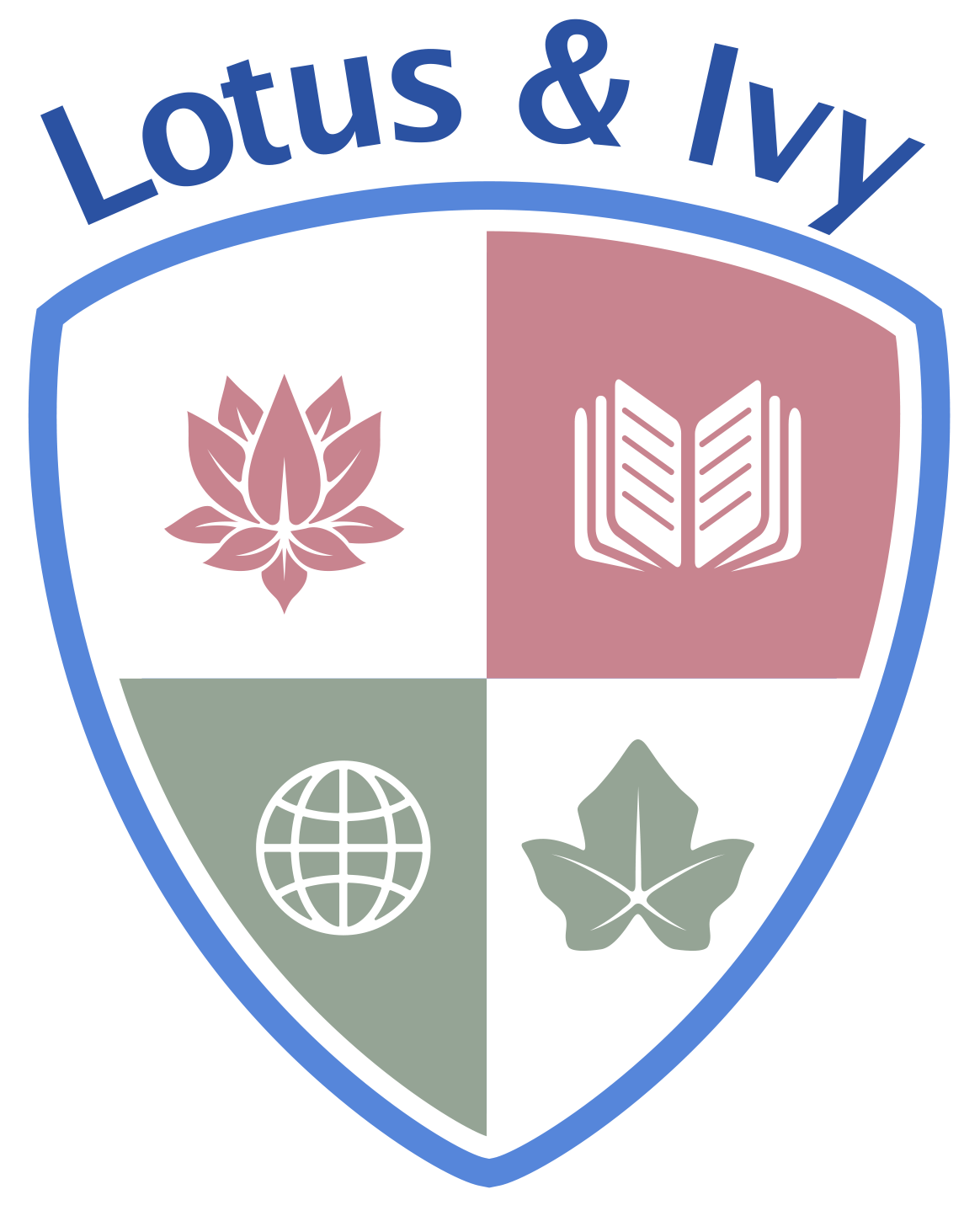Class 7 Complements
Click one below to learn more:
PAINTING & DRAWING
Needle Felting & Wet Felting: Animals & Wearable Art
COOKING
UKuLELE
Introduction to Latin
THEATRE & SPEECH
WORLD LANGUAGES: SPANISH & GERMAN
extra lesson
Our Class 7 size is 14 students, allowing the teacher to get to know each student and creating a class community environment during class.
Painting & Drawing
SEMESTER 1 WITH MR. GAY & SEMESTER 2 WITH MS. JONES-SCHMIDT
This is a year-long class (2 semester) for 7th and 8th grade students. Black and white drawings of natural objects and still life; landscape color perspective paintings; perspective drawing; and architecture will be central to this class.
Students who are 13 & 14 can feel unsure and misunderstood in their changing physical bodies. Artistic work can help them stand more confidently and easily in the world. Practicing accuracy in perception and thinking will help the student form a clear relationship with the world around them and their own mental abilities.
SEMESTER 1 WITH MR. GAY
In this semester, we will further explore object drawing, with a strong focus on observation, moving from black and white into full color. The lessons will start with simple skills exercises to develop drawing skills and we will then work tasks set. Learning to observe precisely is key to good object drawing. We will practice using everyday household objects that will become the focus of drawing, honing in our skills of line, shading, light and darkness. We will use only black and white and then move into colour.
Each student will learn how to use a pencil, line weights, intensity etc and look at how, when using color pencils, we can layer colours to give deeper and more vibrant colours.
Once we have mastered some of these skills we will explore the same observation using paints, particularly aspects of veil painting so they can learn how to combine colours. and how thin transparent layers can bring a vibrancy to their work.
This semester will consist of lessons where the teacher leads the students through a piece of work and also work they create freely by themselves.
SEMESTER 2 WITH MS. JONES-SCHMIDT
This class will focus on landscape painting in various media. We’ll incorporate what the students have learned in previous classes regarding perspective, shading, color, and form. Periodically, I’ll introduce the work of a particular artist. We’ll discuss that person’s technique and think about adapting it for our own work.
Waldorf students work with watercolors from Kindergarten on. The early grades focus on color study, leading to veil painting in older classes. In this class, we'll work with the subtleties and gradations of color possible when using tubed, rather than liquid, watercolors.
Pastel paintings encourage the student to build up forms and create depth by adding layers of color. The results can be paintings that practically sparkle with rich color.
Acrylics provide yet another approach to liquid paints. These paints are created from a plastic base and dry very quickly, so any “mistake” can be easily corrected. Acrylic paints were not available until the mid-20th century. Now, many artists prefer them to oil paints.
We will end the year with paper-cut collages. These are not paintings, but they offer yet another approach to color and form [as well as fine motor challenges!].
In each block, the teacher will model proper brush technique and color mixing possibilities as well as providing an image to serve as a model. Students will be encouraged to "make the painting their own" by adding or deleting elements from the model, or by choosing their own models.
The course will focus on the period of history from 1800 - 1950. We’ll explore various media and take a brief look at the work of some of the major visual artists of this time period.
Cooking

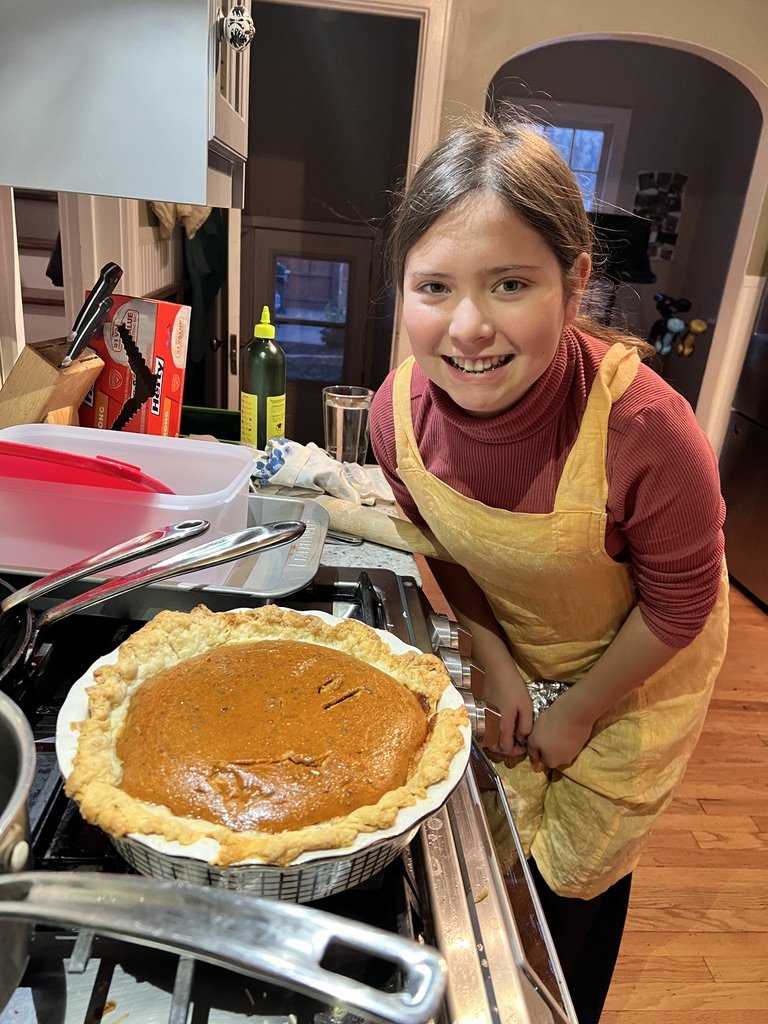
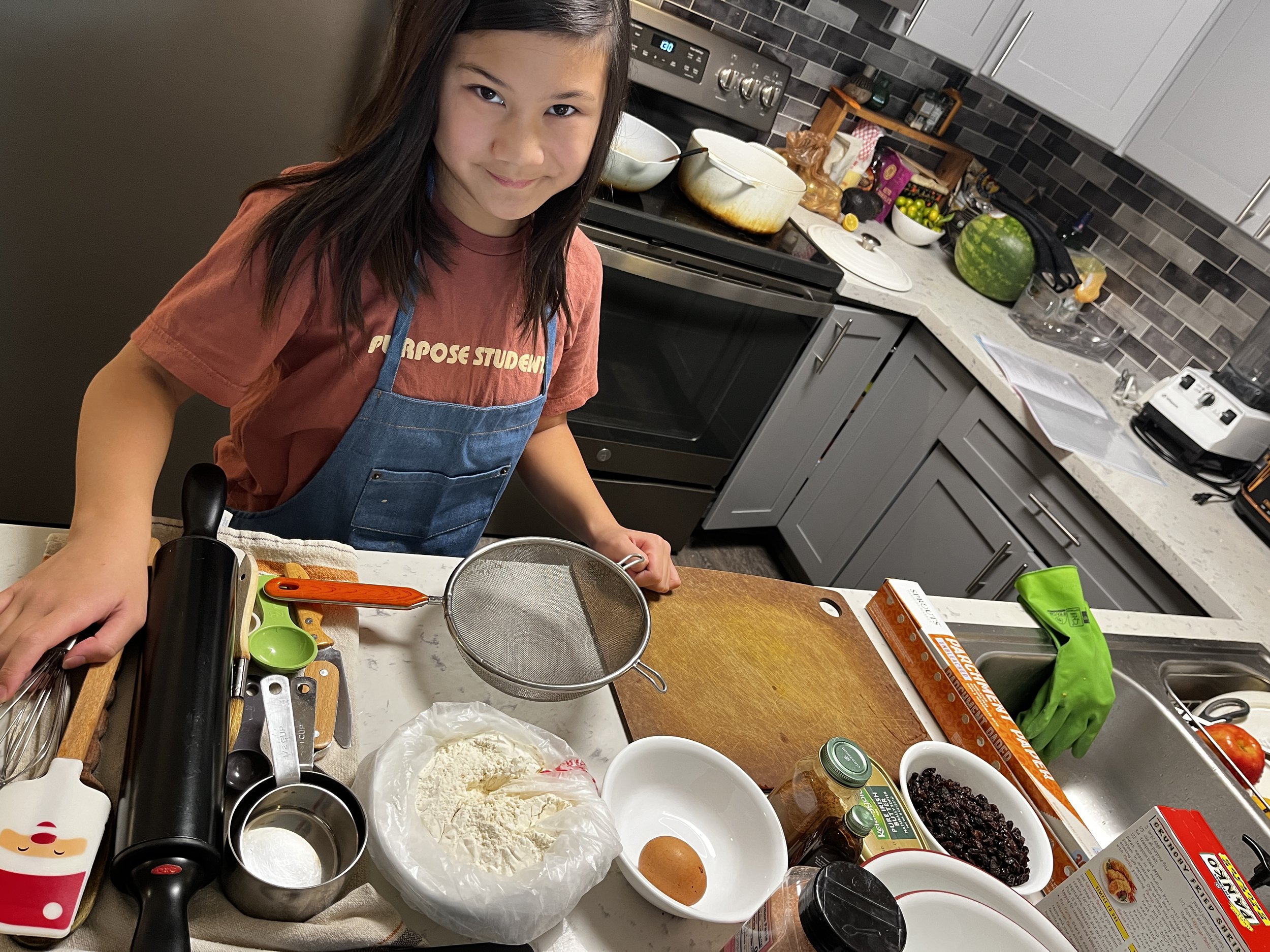
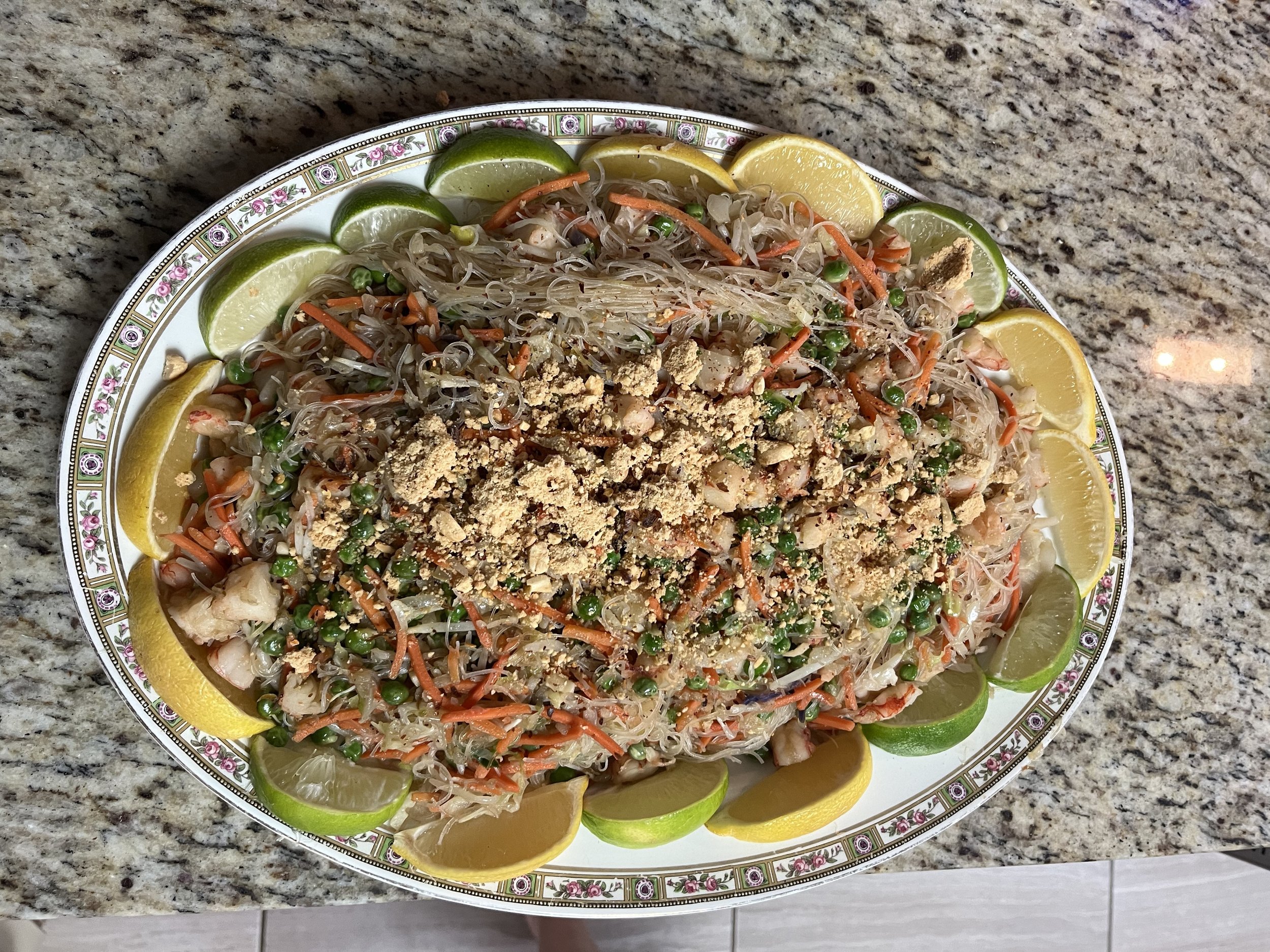

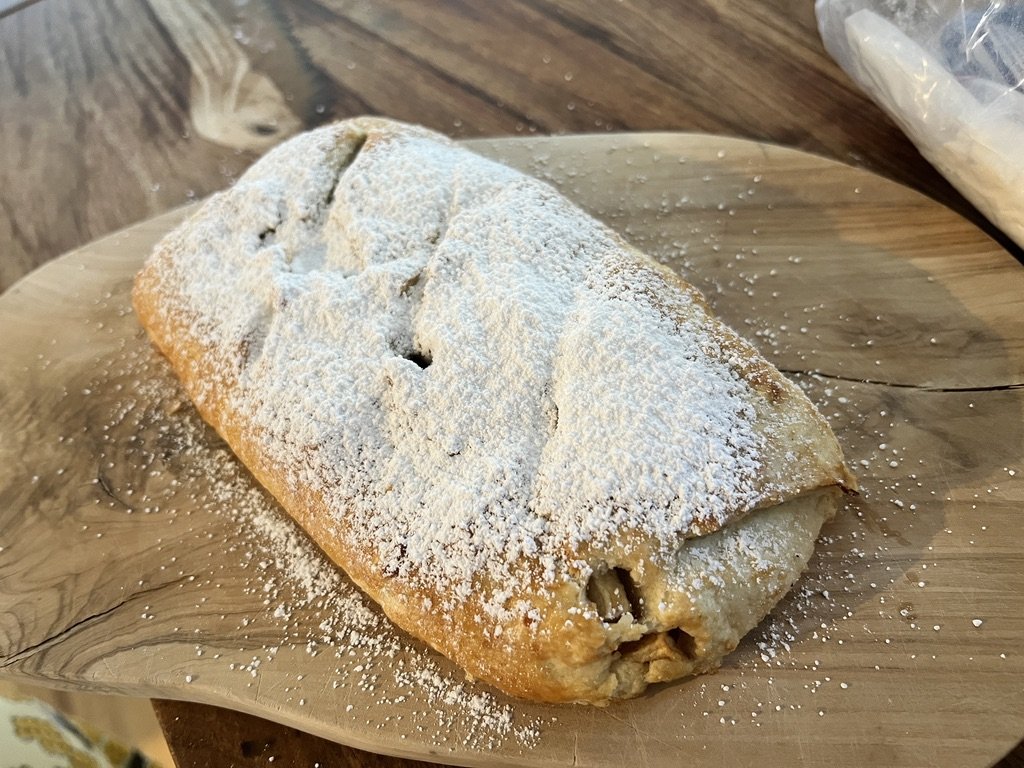

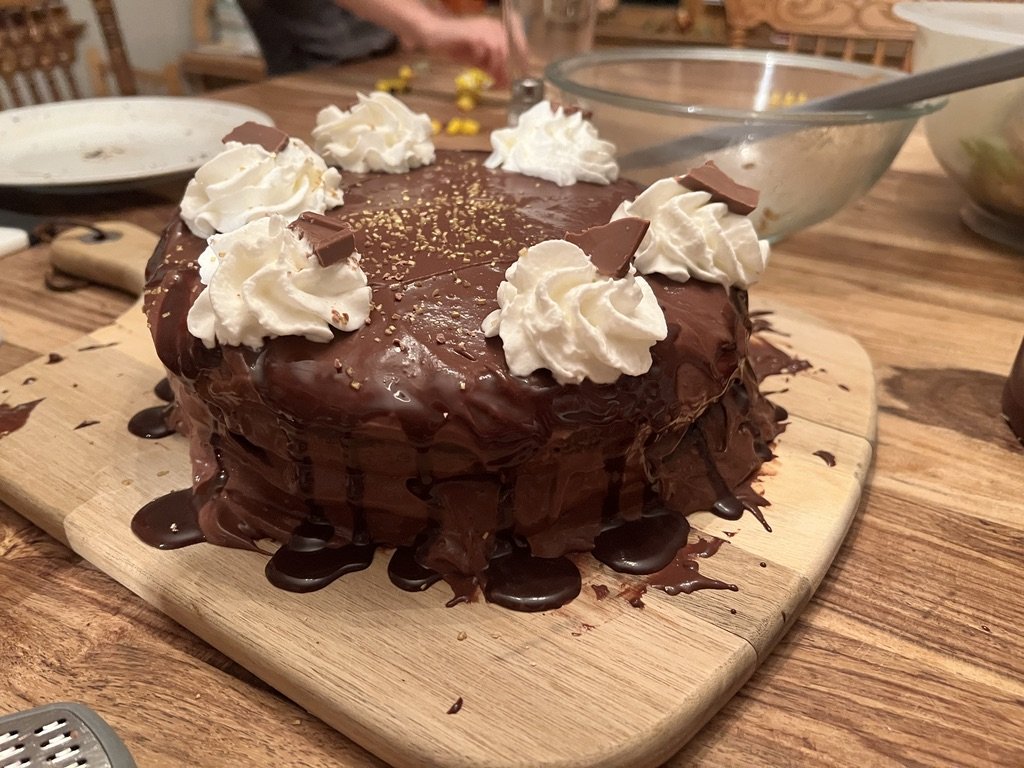
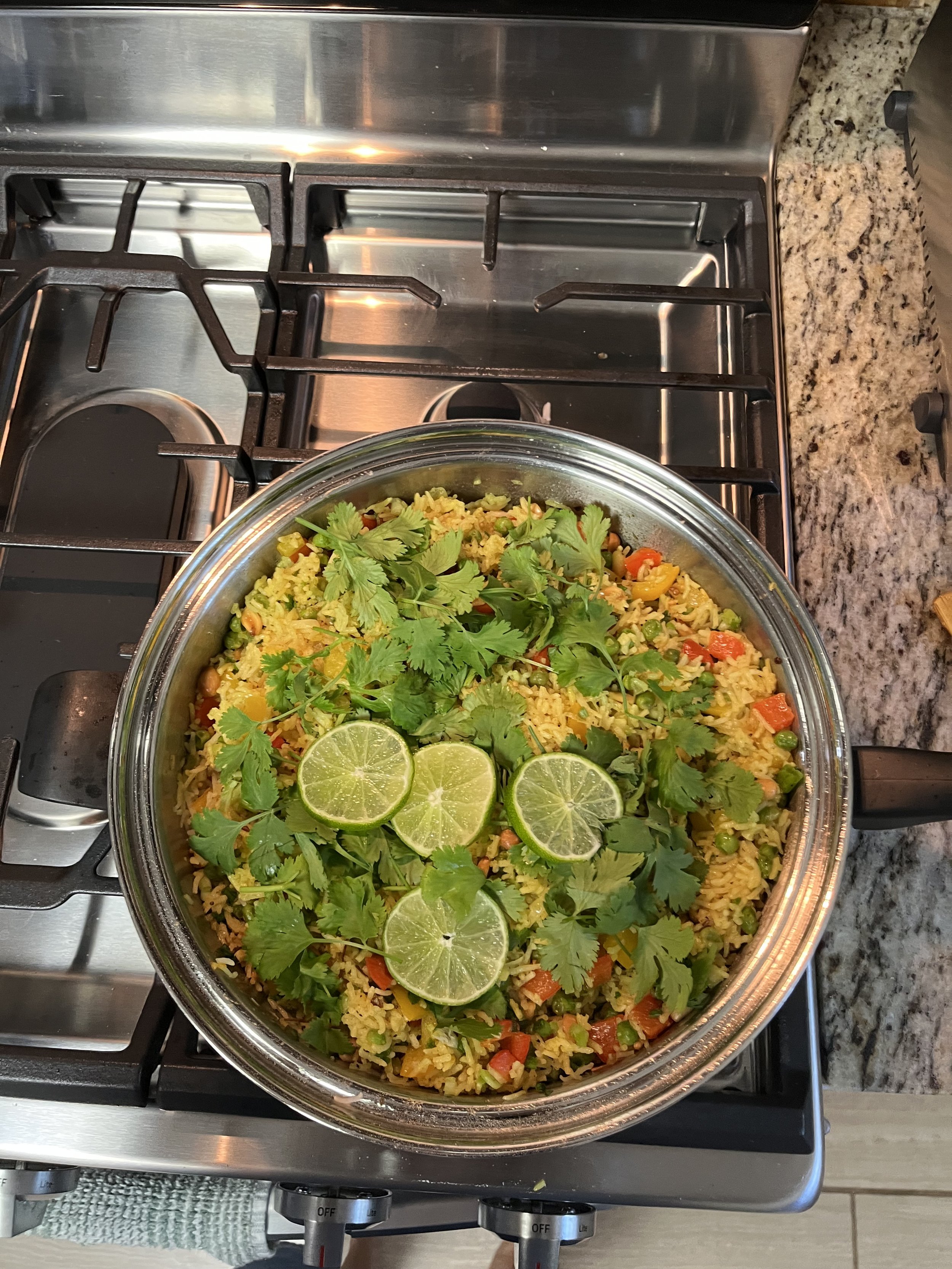

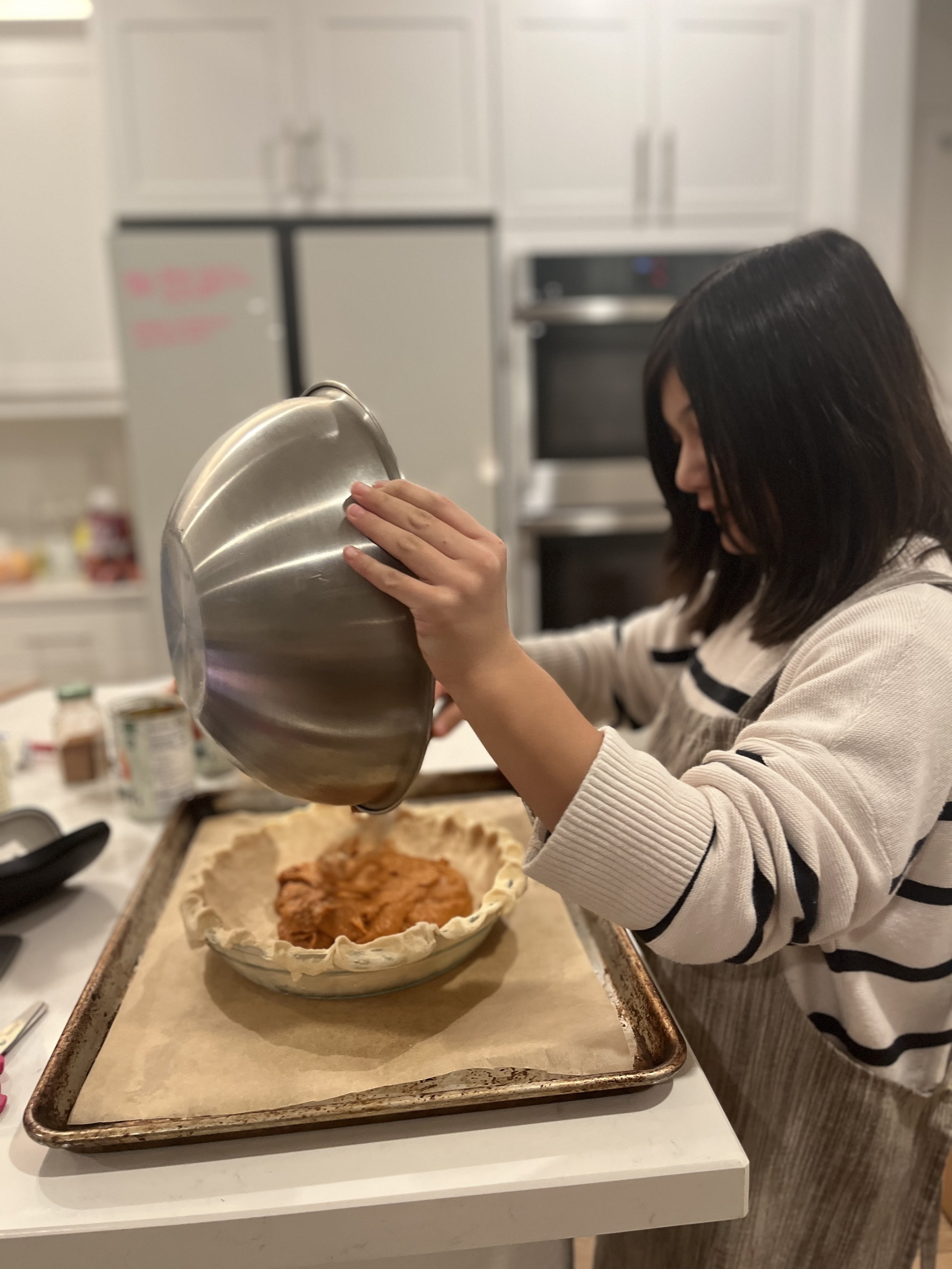



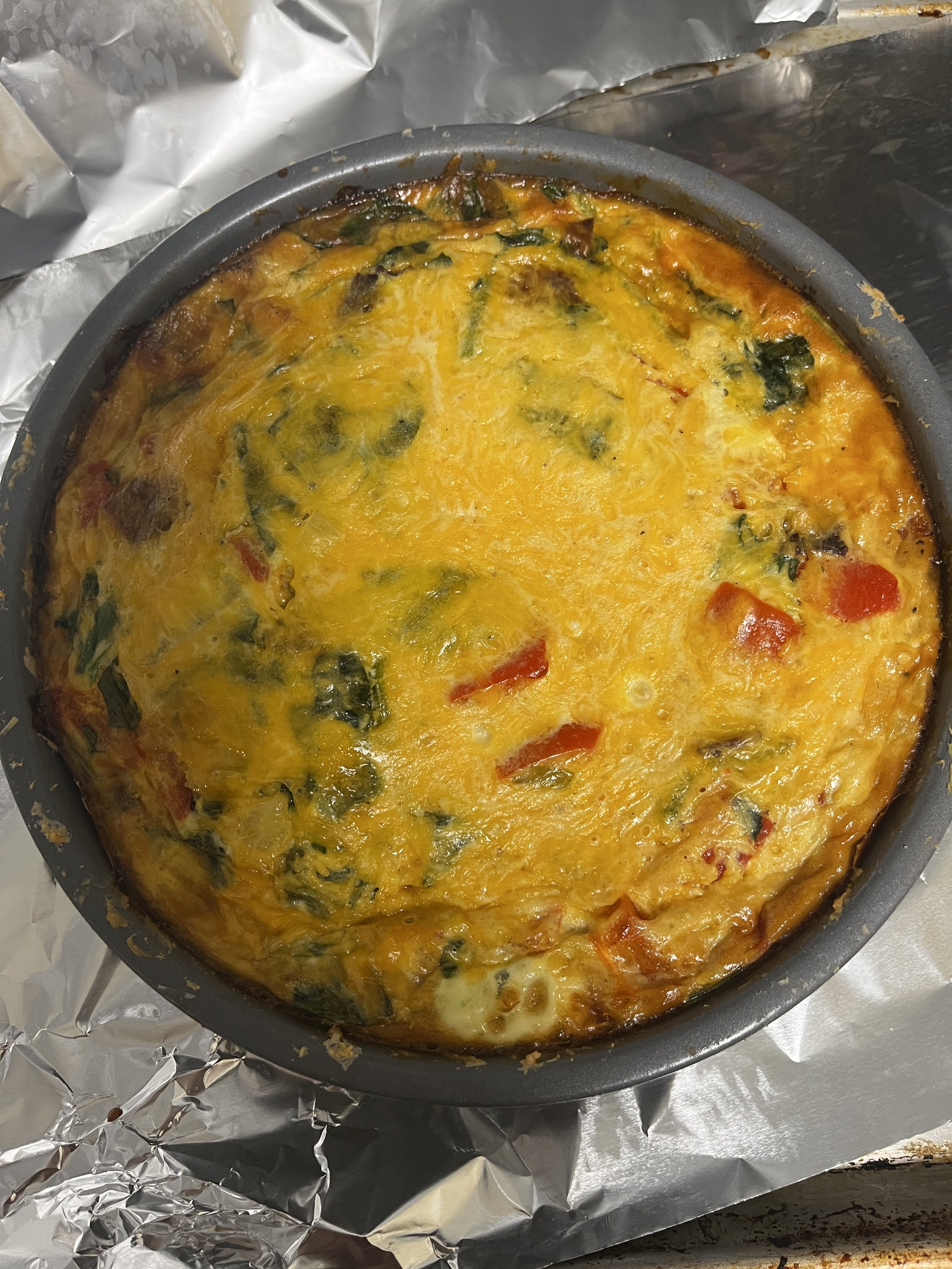
Encouraging children to help prepare healthy meals for their families is an excellent way to teach them essential life skills. They gain a deeper understanding of the effort and time required to create tasty dishes and develop a stronger connection to the ingredients they use. This connection often makes children more open to trying foods with new flavors and textures. By expanding their palate, they can develop healthy eating habits that benefit them for life. By encouraging independence and instilling competence, children will gain the confidence to make any recipe they discover and adapt recipes to suit their tastes. The sense of accomplishment that comes from feeding loved ones can also lead to self-confidence in other areas of life.
Anticipated Recipe List:
(Recipes are subject to change according to dietary restrictions and accommodations needed within the class.)
Moroccan Couscous with roasted vegetables- Morocco
Apple strudel- Germany
Stuffed Grape leaves- Lebanon
Design Your Own Tacos- Mexico
Challah Bread- Israel
Moist Healthy Chocolate Cake- Ukraine
Swedish Pancakes- Sweden
Pita and Hummus- Egypt
Khichdi/Indian Fried Rice- India
Brigadeiros/Brazilian Fudge Balls- Brazil
Gyoza Dumplings- Japan
Pumpkin pie- North America
Quiche Lorraine- France
Cranberry Hootycreeks Jar Cookies for gift-giving- USA
Pasta al Limone- Italy
Belokranjska Pogača/Traditional Slovenian Bread- Slovenia
Hungarian Chicken Paprikash with Dumplings- Hungary
Chicken Noodle Soup
Throughout the semester, the variety of recipes will reinforce technical skills, encourage innovative use of ingredients, and support interest in food culture. However, this class is about more than preparing tasty dishes.
Cooking offers hands-on experience with measuring, counting, fractions, tracking time, and temperature. For students in third grade and up, multiplication and division skills are needed to scale a recipe up or down. For students in fifth grade and up, additional math practice can come from calculating the cost of making a recipe vs. the price of a take-out version of a similar dish.
Following the step-by-step process-focused instructions of a recipe improves reading comprehension and shows that reading has practical benefits.
As foods are prepared, abstract concepts such as chemical reactions become relevant and understandable to children.
Cooking requires problem-solving and resilience to find solutions when a recipe does not come together as planned.
Many recipes we will prepare utilize basic ingredients that the student may already have in their pantry, demonstrating that home-cooked meals are manageable and can be fast and straightforward to prepare.
The kitchen is an excellent place for children to engage their senses experientially. They can knead, toss, pour, smell, chop, feel, and taste foods, all while having fun and learning without even realizing it.
Students will be encouraged to flavor dishes with herbs and spices and challenged to try their own variations, customizing recipes to suit their flavor and dietary preferences.
Cooking can teach children responsibility as they learn specific tasks to contribute to meal preparation and cleanup.
Acquiring ingredients from the grocery store, farmer’s market, or even harvesting their own herbs, fruits, and vegetables helps children understand where the ingredients that make up their favorite meals are sourced. Purchasing fresh, locally grown ingredients supports farmers in your area. For the Cooking 3/4 class: Students will be encouraged to visit a farmer’s market or pick- your-own farm to choose local seasonal ingredients.
Making a grocery list before shopping helps a child learn about planning and making informed choices about healthy foods. Choosing whole-food ingredients reduces packaging waste and instills the values of environmental consciousness.
Preparing recipes from other countries allows children to experience new flavors and textures. This exposure to diverse cuisines opens a child’s mind to different cultures, offers a geography lesson, and promotes awareness, understanding, and appreciation of culinary traditions and practices worldwide. For the Cooking 5-8 class: Each week, students will be encouraged to research two new facts about the recipe’s country of origin to share with the class.
Cooking allows children to learn more about their own heritage and family traditions through treasured recipes passed down through the generations.
Needle Felting & Wet Felting: Animals & Wearable Art
In this advanced immersive fiber arts class, students will delve into the tactile world of needle felting and wet felting, refining their skills while embracing new creative possibilities. Through hands-on exploration, they will sculpt intricate animal figures, mastering proportions, form, and texture, while also designing stylish wearable art such as felted mittens, scarves, bags, and other accessories that reflect their unique artistic perspective.
Themes from the main lesson content, whether history, geography, mythology, or nature, will often serve as inspiration, allowing students to bring abstract concepts to life in tangible forms. This approach deepens their connection to their studies, making history feel more immediate and geography more personal as they shape their creations.
Beyond technique, this class fosters mindfulness and focus, as working with wool engages both the hands and the mind, creating a meditative rhythm that supports a sense of calm and presence. This deeper engagement not only enhances their creative process but also strengthens their ability to express ideas through their work.
By the end of the course, students will have developed their technical abilities and artistic voices, producing sculptures and wearable pieces that are both personal and expressive. Whether crafting lifelike animals or designing functional accessories, they will leave with a richer appreciation for fiber arts and the confidence to shape their creative visions into reality.
Theatre & Speech
In our weekly drama class, students will explore the power of storytelling through drama. In class we learn how to bring characters to life through characterization, movement, and voice. Steiner-inspired speech exercises will provide a backdrop to work on speech concepts such as articulation, diction*, prosody (expressiveness of speech), and flow.
By working with familiar themes and stories inspired from their Main Lesson classes and the classics, students will learn core acting skills that will help them bring the stories and characters to life. Despite being online, ensemble-building will be a crucial component of this course. Theatre games and choral work will build our group together through laughter and imagination! No experience necessary.
LOTUS AND IVY DRAMA SCOPE AND SEQUENCE THROUGH THE GRADES
K-1 Creative Drama and Voice:
In creative drama, our students learn foundational acting skills. We focus on using our bodies expressly and representationally to act out different animals, people, and emotions that we feel. We use charming seasonal stories to act out, explore, and create different production elements to bring the story to life at home and online together such as puppets, masks, and simple scarf-based costumes and sets.
Grade 2-3 Theatre and Speech:
In Creative Storytelling and Drama, we pick up where we left off in Creative Drama, but focusing on how we use our voices and imagination to tell stories, poems, and speak with people in our everyday lives. Storytelling focal points include finding levels in our voices to show different levels of emotional states, using our imagination to turn abstract objects into other objects, and most importantly having fun!
Grade 4-5 Theatre and Speech:
Fourth and 5th Graders will continue their knowledge of theatre training by focusing on character building in this course. We will still explore the foundational acting “tool kit” of voice, body, and imagination, but we will focus more on how our bodies can reflect a character, how our voices can reflect that all on the Zoom screen! This class will work on a play to be presented at the end of the semester.
Grade 6-8 Theatre and Speech:
Improvisation, Scene Study, Physical Theatre, oh my! Our middle school Theatre and Speech class is all about using our whole-selves to create theatre magic! We will be exploring physical theatre techniques such as pantomime, improv skills through improvisation games and scene, and character work within scene study. This “all-round” class offers a great introduction to performing to students who have never taken a theatre class before and skills practice to those who are involved with local theatres or have taken a Lotus and Ivy Theatre and Speech class in the past.
Through Creative Dramatics, students will practice speech concepts such as visualization and articulation, while working with others and harnessing their imaginative skills.
Our class will meet weekly for 18 weeks (except during school-wide breaks) and will culminate with a demonstration meeting in which families and siblings are invited.
*Please note, this does not take the place of specialized Speech Pathology courses. This will aid students in these areas.
Introduction to Latin
In the Class 6 & 7 Latin language class, the students will be learning to pronounce, spell and translate over 150 Latin words. They will be memorizing 4 Latin verses, declensions, conjugations, and several Latin sayings, deepening their appreciation for the evolution, history, and beauty of language. They will create a beautiful Latin main lesson book. The class ends with the students writing and illustrating their own Latin short story book.
Studying Latin can drastically improve language learning skills as it aids in the study of many other languages. There are many languages that draw from Latin, particularly English, French, Italian and Spanish.
Studying Latin in Class 6 & 7 enriches and complements the study of ancient Rome, the Middle Ages, and the Renaissance, which the students are learning about in their main lessons.
Ukulele
Playing the ukulele offers a myriad of benefits that positively impact both mental and physical well-being. Engaging in the rhythmic strumming and precise finger movements required to play chords and melodies enhances hand-eye coordination and fine motor skills. The melodic and harmonic aspects of playing the ukulele promotes relaxation, and reduces feelings of stress and anxiety. Learning and practicing music stimulates various areas of the brain, improving cognitive function, memory, and concentration.
Regular practice sessions instill discipline and perseverance, contributing to personal growth and development. Please encourage your child to play every day until it becomes a habit.
In this class, students will embark on an exciting musical journey, learning the fundamentals of playing the ukulele while exploring various rhythms, chords, and songs.
To begin, we will start with the basics, teaching everyone a foundational rhythm pattern (DDUUDU) and three essential chords (C, F, G). With these chords and rhythm, students will learn to play songs, laying a strong groundwork for their ukulele skills.
As we progress, we will expand our chord repertoire by introducing two minor chords (Am and Em), enriching our musical palette and broadening the range of songs we can play. Students will continue to practice and refine their technique, gaining confidence in their ability to strum and switch between chords seamlessly.
While we will be learning chords, the class will be focused on playing music. Blending chord practice and playing songs will make for a wonderful, full learning experience and will excite the children. During class, students will be listening to me, and playing along, or I will play a group of chords, and they will “repeat after me” in a choral manner. There will also be times where students are the ones leading and playing off mute.
Next, we will delve into the world of bar chords, learning the D and Bm chords. These chords will unlock new possibilities, allowing students to comfortably play songs in the key of G (G, C, D, Am, Bm, Em). With a focus on mastering different rhythms, students will learn to play songs with varied time signatures, adding depth and complexity to their musical repertoire.
As students progress, they will have the opportunity to explore advanced chord variations and their own musical choices. For those ready to challenge themselves further, advanced chord shapes such as Dominant 7th and bar chord versions will be introduced, encouraging exploration of the ukulele's fretboard.
In the final stages of the class, students will learn to play in the key of F, mastering chords such as Bb, Gm, and Dm. With a diverse range of chords and rhythms at their disposal, students will be well-prepared to tackle a variety of songs and even consider performing in gigs.
Throughout the class, emphasis will be placed on creativity, expression, and collaborative learning. By the end of the course, students will have developed a solid foundation in ukulele playing, equipped with the skills and confidence to continue their musical journey with passion and enthusiasm.
If you’d like some reading about music in Waldorf schools, this is a wonderful read:Music as a Threshold Experience
Extra Lesson
The Developmental Support Program is based on the work of Audrey McAllen, an educator within the Steiner Waldorf tradition, who developed The Extra Lesson. This approach helps children overcome developmental challenges through movement, sensory integration, and artistic activities. Rooted in Rudolf Steiner's philosophy, the program aims to support the whole child—body, mind, and spirit—by focusing on foundational developmental skills. Click here to learn more.
